
Carthage was an ancient city on the eastern side of the Lake of Tunis in what is now Tunisia. Carthage was one of the most important trading hubs of the Ancient Mediterranean and one of the most affluent cities of the classical world. It became the capital city of the civilisation of Ancient Carthage and later Roman Carthage.

Polybius was a Greek historian of the middle Hellenistic period. He is noted for his work The Histories, a universal history documenting the rise of Rome in the Mediterranean in the third and second centuries BC. It covered the period of 264–146 BC, recording in detail events in Italy, Iberia, Greece, Macedonia, Syria, Egypt and Africa, and documented the Punic Wars and Macedonian Wars among many others.

Lyon Sprague de Camp was an American author of science fiction, fantasy and non-fiction literature. In a career spanning 60 years, he wrote over 100 books, including novels and works of non-fiction, including biographies of other fantasy authors. He was a major figure in science fiction in the 1930s and 1940s.
Timaeus of Tauromenium was an ancient Greek historian. He was widely regarded by ancient authors as the most influential historian between the time of Ephorus and Polybius. In the words of scholar Lionel I. C. Pearson, Timaeus "maintained his position as the standard authority on the history of the Greek West for nearly five centuries."

Dionysius I or Dionysius the Elder was a Greek tyrant of Syracuse, Sicily. He conquered several cities in Sicily and southern Italy, opposed Carthage's influence in Sicily and made Syracuse the most powerful of the Western Greek colonies. He was regarded by the ancients as an example of the worst kind of despot: cruel, suspicious, and vindictive.
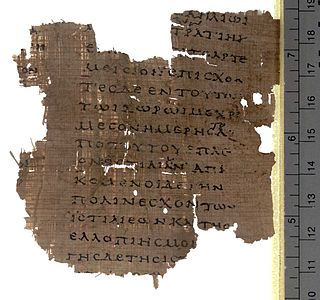
The Histories of Herodotus is considered the founding work of history in Western literature. Although not a fully impartial record, it remains one of the West's most important sources regarding these affairs. Moreover, it established the genre and study of history in the Western world.

Ancient Greek literature is literature written in the Ancient Greek language from the earliest texts until the time of the Byzantine Empire. The earliest surviving works of ancient Greek literature, dating back to the early Archaic period, are the two epic poems the Iliad and the Odyssey, set in an idealized archaic past today identified as having some relation to the Mycenaean era. These two epics, along with the Homeric Hymns and the two poems of Hesiod, the Theogony and Works and Days, constituted the major foundations of the Greek literary tradition that would continue into the Classical, Hellenistic, and Roman periods.
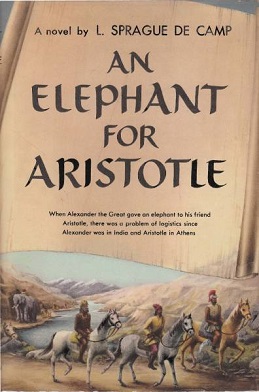
An Elephant for Aristotle is a 1958 historical novel by American writer L. Sprague de Camp. It was first published in hardback by Doubleday, and in paperback by Curtis in 1971. The first British edition was published by Dobson in 1966. The book was reissued with a new introduction by Harry Turtledove as a trade paperback and e-book by Phoenix Pick in March 2013. It is the first of de Camp's historical novels in order of writing, and the third chronologically.

Elephant is a science book by L. Sprague de Camp, published by Pyramid Books in July 1964 as part of The Worlds of Science series. The cover title is Elephant: The Fascinating Life Cycle of the World's Largest Land Animal.

The Arrows of Hercules is an historical novel by American writer L. Sprague de Camp, first published in hardback by Doubleday in 1965 and in paperback by Curtis Books in 1970. The book was reissued with a new introduction by Harry Turtledove as a trade paperback and ebook by Phoenix Pick in April 2014. It is the fourth of de Camp's historical novels in order of writing, and second chronologically, set in the time of Dionysios I of Syracuse at the end of the 5th and beginning of the 4th centuries BC.
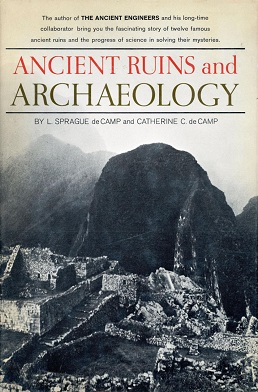
Ancient Ruins and Archaeology is a 1964 science book by L. Sprague de Camp and Catherine Crook de Camp, one of their most popular works. It was first published in hardcover by Doubleday in 1964, and reprinted under the same title by Barnes & Noble Books in 1992. The first British and paperback edition was issued by Fontana in 1972 under the title Citadels of Mystery, which was the de Camps' original working title; this title was retained by the first American paperback edition, issued by Ballantine Books in April 1973 and reprinted in February 1974. Translations into French, German and Portuguese have also appeared. Portions of the work had previously appeared as articles in the magazines Astounding Science Fiction, Fate, Frontiers, Natural History Magazine, Other Worlds Science Stories, Science Fiction Quarterly, and Travel.
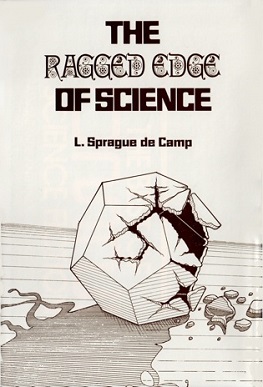
The Ragged Edge of Science is a science book by L. Sprague de Camp, illustrated by Don Simpson. It was first published by Owlswick Press in 1980.

Lost Continents: The Atlantis Theme in History, Science, and Literature is a study by L. Sprague de Camp that provides a detailed examination of theories and speculations on Atlantis and other lost lands, including the scientific arguments against their existence. It is one of his most popular works. It was written in 1948 and first published serially in the magazine Other Worlds Science Fiction in 1952–1953; portions also appeared as articles in Astounding Science Fiction, Galaxy Science Fiction, Natural History Magazine, and the Toronto Star. It was first published in book form by Gnome Press in 1954; an updated edition was published by Dover Publications in 1970. De Camp revised the work both for its first book publication and for the updated edition.

The Glory That Was is a science fiction novel by American writer L. Sprague de Camp. It was first published in the science fiction magazine Startling Stories for April, 1952, and subsequently published in book form in hardcover by Avalon Books in 1960 and in paperback by Paperback Library in March 1971. It has since been reprinted in paperback by Ace Books in July 1979 and Baen Books in April 1992, and in trade paperback by Phoenix Pick in September 2014. An E-book edition was published by Gollancz's SF Gateway imprint on September 29, 2011 as part of a general release of de Camp's works in electronic form; a second e-book edition was issued by Phoenix Pick in September 2014. The book has also been translated into Italian, German and Greek.

The Pusadian series is a sequence of fantasy stories by L. Sprague de Camp, begun in the early 1950s and written under the influence of Robert E. Howard's Conan stories. The series, also known as the Poseidonis series, prefigured the numerous sword & sorcery settings of the 1960s and 1970s.

Bibliotheca historica is a work of universal history by Diodorus Siculus. It consisted of forty books, which were divided into three sections. The first six books are geographical in theme, and describe the history and culture of Egypt, of Mesopotamia, India, Scythia, and Arabia (II), of North Africa (III), and of Greece and Europe (IV–VI). In the next section, he recounts human history starting with the Trojan War, down to the death of Alexander the Great. The last section concern the historical events from the successors of Alexander down to either 60 BC or the beginning of Caesar's Gallic War in 59 BC. He selected the name "Bibliotheca" in acknowledgement that he was assembling a composite work from many sources. Of the authors he drew from, some who have been identified include: Hecataeus of Abdera, Ctesias of Cnidus, Ephorus, Theopompus, Hieronymus of Cardia, Duris of Samos, Diyllus, Philistus, Timaeus, Polybius and Posidonius.

Ancient Carthage was an ancient Semitic civilisation based in North Africa. Initially a settlement in present-day Tunisia, it later became a city-state and then an empire. Founded by the Phoenicians in the ninth century BC, Carthage reached its height in the fourth century BC as one of the largest metropolises in the world. It was the centre of the Carthaginian Empire, a major power led by the Punic people who dominated the ancient western and central Mediterranean Sea. Following the Punic Wars, Carthage was destroyed by the Romans in 146 BC, who later rebuilt the city lavishly.
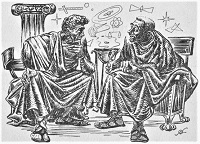
"Aristotle and the Gun" is a time travel and alternate history science fiction story by American writer L. Sprague de Camp.

This bibliography of Greece is a list of books in the English language which reliable sources indicate relate to the general topic of Greece.

Human habitation in the North African region began over one million years ago. Remains of Homo erectus during the Middle Pleistocene period, has been found in North Africa. The Berbers, who generally antedate by many millennia the Phoenicians and the establishment of Carthage, are understood to have arisen out of social events shaped by the confluence of several earlier peoples, i.e., the Capsian culture, events which eventually constituted their ethnogenesis. Thereafter Berbers lived as an independent people in North Africa, including the Tunisian region.



















